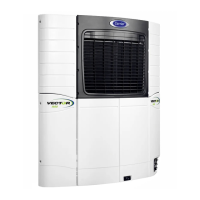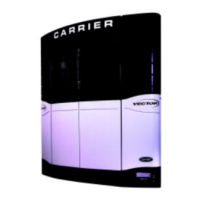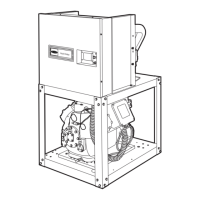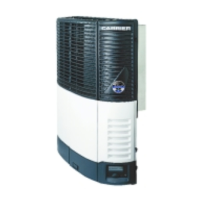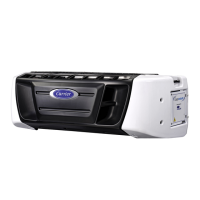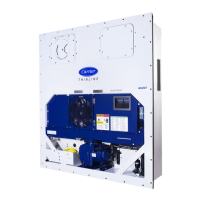62-11389
7−69
Alarm
NO.
Steps Alarm/Cause Corrective Action
125 CHECK COMP DISCHARGE SENSOR
• TRIGGER–ON: Compressor Discharge Temperature Sensor (CDT) is not within the range of –40°
to +392°F (-40° to +200°C.)
• UNIT CONTROL: Engine and Standby Operation: Alarm Only.
• RESET CONDITION: Auto Reset when Compressor Discharge Sensor is in range or, alarm may be
manually reset via keypad or by turning the unit off, then back on again.
NOTE: Follow the steps below until a problem is found. Once a repair or correction has been made, the active
alarm should clear itself (see reset condition above). Operate the unit through the appropriate modes to see if
any active alarm occurs. Continue with the steps below as necessary.
1 Check Sensor
a. Inspect sensor & connector. No damage to sensor.
No damage, moisture, or corrosion in connector.
b. Check sensor resistance. (See
Note 3, page 7−2.)
100,000 Ohms @ 77°F (25°C) See Table 8−6 for
complete resistance chart.)
2 Check Compressor Discharge Sensor Wiring
a. Inspect harness & control box
connector pins & terminals. (1MP,
see wiring schematic Section 10.)
No physical damage to harness.
No damage, moisture, or corrosion in connectors.
b. Power up the microprocessor (see
Note 2 page 7−2). Disconnect
sensor from harness. Check for
2.5 VDC at harness plug between
pins.
Voltage should be 2.5 VDC volts at harness plug be-
tween pins. This verifies microprocessor output and
wiring connections to the sensor.
126 CHECK FUEL SENSOR CIRCUIT
• TRIGGER–ON: The fuel level sensor is configured as a 0-5VDC or 0.25-4.75VDC sensor and the
reading (in the data list) is less than 2% for 30 seconds.
• UNIT CONTROL: Engine Operation: Alarm Only.
Standby Operation: This alarm does not activate in standby.
• RESET CONDITION: Auto Reset when fuel level is sensed above 4% for 30 seconds or, alarm may
be manually reset via keypad or by turning the unit off, then back on again.
NOTE: Follow the steps below until a problem is found. Once a repair or correction has been made, the active
alarm should clear itself (see reset condition above). Operate the unit through the appropriate modes to see if
any active alarm occurs. Continue with the steps below as necessary.
1 Check For Low Fuel Level
Check fuel level in tank. Add fuel as needed.
2 Check Sensor Fuse & Wiring
Perform sensor check procedure,
refer to Section 8.5.6
NOTE: If new sensor is not available, the sensor may
be configured OFF temporarily. Refer to Section
5.2.1 - Configurations.)
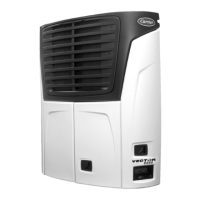
